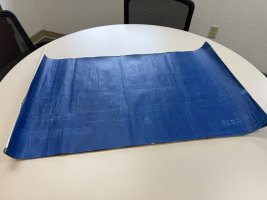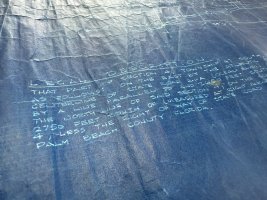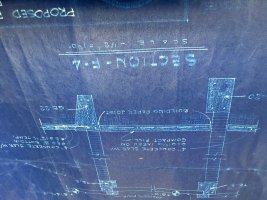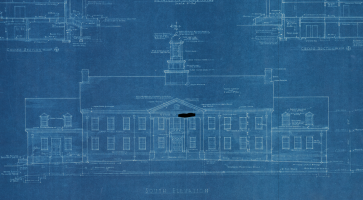-
Welcome to The Building Code Forum
Your premier resource for building code knowledge.
This forum remains free to the public thanks to the generous support of our Sawhorse Members and Corporate Sponsors. Their contributions help keep this community thriving and accessible.
Want enhanced access to expert discussions and exclusive features? Learn more about the benefits here.
Ready to upgrade? Log in and upgrade now.
You are using an out of date browser. It may not display this or other websites correctly.
You should upgrade or use an alternative browser.
You should upgrade or use an alternative browser.
Look what showed up on my desk
- Thread starter jar546
- Start date
jar546
CBO
Hopefully they will be out of plan review soon...........LOL,
That joke is courtesy of retired CDA.
That joke is courtesy of retired CDA.
walker.t
SAWHORSE
Beautiful! Man, hope those don’t end up in the trash, I know there’s only so much storage space but if they can’t keep them maybe offer them to a library.they found them in the back where we are cleaning up to make more room for offices.
jar546
CBO
We had them scanned in and we are keeping them. The Director of PW wants to get the pages framed and put them in the hallway.Beautiful! Man, hope those don’t end up in the trash, I know there’s only so much storage space but if they can’t keep them maybe offer them to a library.
walker.t
SAWHORSE
I thought that exposure to light caused blueprints to fade, found this article tonight where someone suggested displaying a color copy, they also mention fading due to exposure to light:get the pages framed and put them in the hallway.

Framing/displaying blueprints
I remember reading that blueprints are light sensitive. (I checked the Archives.) What happens when they are exposed to light? Do they fade away completely or change colors? Is incandescent light as bad as fluorescent and daylight? The question came up again because yesterday a customer brought...
A client has a framed blueprint in one of his buildings, looks great as a piece of artwork.
Paul Sweet
SAWHORSE
Hallways usually have lower light levels. I don't think that blueprints (wet process) fade as badly as bluelines (ammonia process).
steveray
SAWHORSE
Yikes
SAWHORSE
Blueprints - - white lines on a blue background - - are oxide based printing, and the process is halted when the chemicals are rinsed off in the printing process. In my experience they are no more and no less sensitive to fading than any other commonly printed material. If you are going to display them where you’ve already seen other old photos or prints fade over time, you can expect a similar speed of degradation. I would not place them in a wall that receives direct sunlight.
Bluelines, the blue-ish purple lines on white paper, use a different process known as Diazo. They are much more sensitive to ultraviolet light and will continue to fade more quickly over time as compared to other conventionally printed materials. By the time diazo replaced blueprinting, the standard paper stock was also thinner to save on costs, and it also was more sensitive to degradation in sunlight and would yellow easily.
To see how bluelines can still be made, check out this recent video, which provoked discussion on another thread for different reasons:
Bluelines, the blue-ish purple lines on white paper, use a different process known as Diazo. They are much more sensitive to ultraviolet light and will continue to fade more quickly over time as compared to other conventionally printed materials. By the time diazo replaced blueprinting, the standard paper stock was also thinner to save on costs, and it also was more sensitive to degradation in sunlight and would yellow easily.
To see how bluelines can still be made, check out this recent video, which provoked discussion on another thread for different reasons:
Last edited:
walker.t
SAWHORSE
Who knows, a local reprographics house might donate the scanning in the interest of preserving a bit of the town’s history.Wish I had money to digitize them all
steveray
SAWHORSE
This is CT...No one gives anything away unless it is a tax write-off....Who knows, a local reprographics house might donate the scanning in the interest of preserving a bit of the town’s history.
walker.t
SAWHORSE
Maybe there’s still some hope…unless it is a tax write-off....
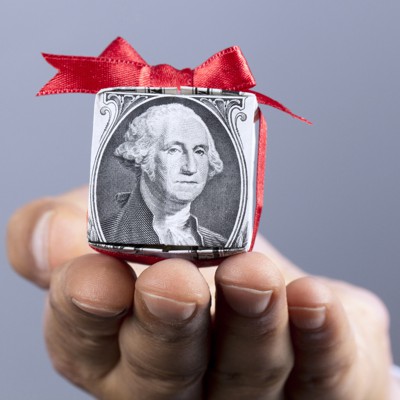
'Tis the Season for Giving—Even to Your Local Government
Just don’t ask for anything specific in return, according to the IRS.
North Carolina is only slightly better per this article…This is CT


